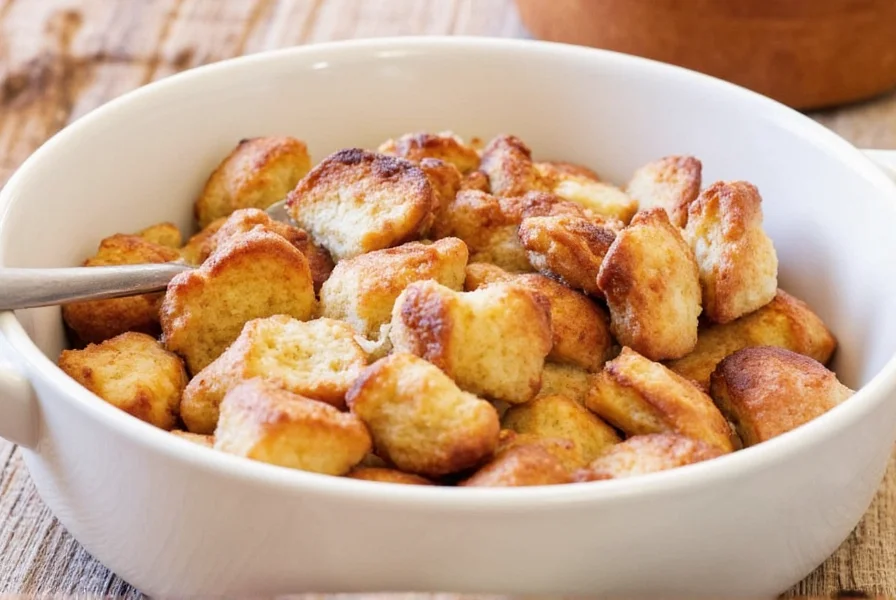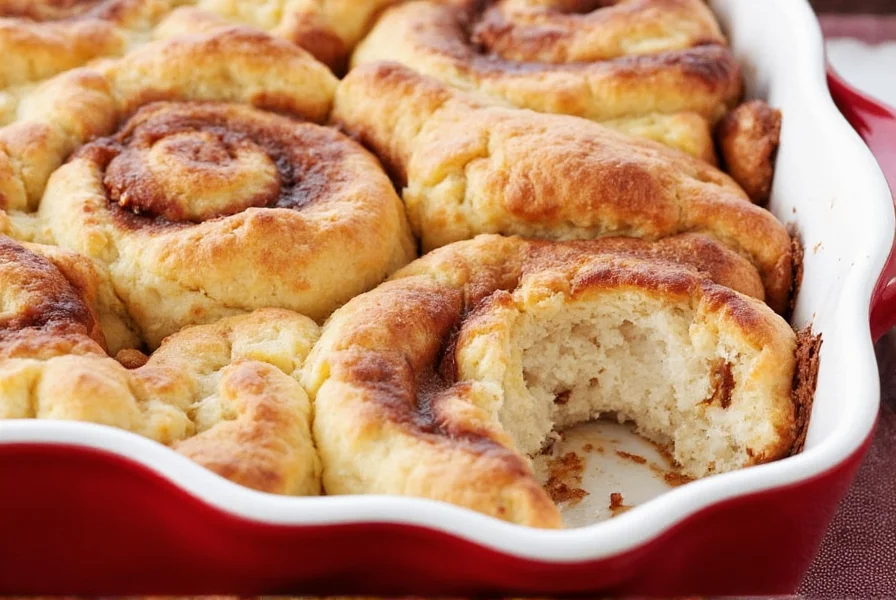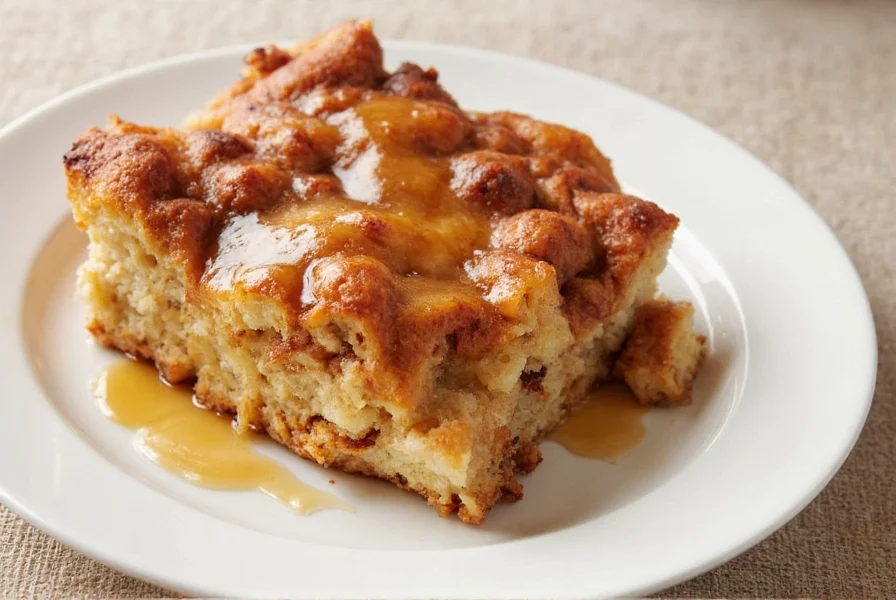If you're searching for the perfect brunch centerpiece that blends the comforting swirls of cinnamon rolls with the rich custard of French toast, this cinnamon roll french toast casserole delivers exactly that. As a professional recipe developer with extensive experience in breakfast casseroles, I've perfected this version to solve common pitfalls like uneven flavor distribution and texture issues that plague many online recipes.
Why This Cinnamon Roll French Toast Casserole Recipe Works
Unlike hastily assembled versions found across the internet, this recipe incorporates professional techniques that guarantee success. The critical difference lies in the custard-to-bread ratio and strategic layering of cinnamon sugar. Many recipes either drown the bread or leave it dry, but our tested measurements create that ideal custard center with crispy edges everyone loves.
What sets this easy cinnamon roll french toast casserole recipe apart is the dual cinnamon approach—incorporating both cinnamon sugar between layers and within the custard itself. This ensures flavor permeates every bite rather than concentrating only on the surface.
Essential Ingredients Breakdown
The magic happens through carefully selected components working in harmony:
| Ingredient | Why It Matters | Pro Tip |
|---|---|---|
| Brioche or Challah bread | Rich egg breads absorb custard without disintegrating | Cube and dry overnight for optimal texture |
| Full-fat dairy | Cream creates luxurious texture; milk balances richness | Don't substitute with non-dairy alternatives here |
| Real maple syrup | Provides complex sweetness that artificial syrups can't match | Grade B offers deeper flavor than Grade A |
| Ceylon cinnamon | Milder, more complex flavor than common Cassia cinnamon | Combine with a pinch of cardamom for depth |
Step-by-Step Preparation Guide
Follow these precise steps for the best cinnamon roll french toast casserole experience:
- Prepare the bread: Cube 1 pound brioche and spread on baking sheets. Leave uncovered overnight at room temperature.
- Create cinnamon layers: Mix 1 cup sugar with 3 tablespoons cinnamon. Sprinkle one-third across the bottom of a greased 9x13 dish.
- Layer bread: Arrange half the bread cubes, then sprinkle with half the remaining cinnamon sugar. Repeat with remaining bread and cinnamon sugar.
- Make custard: Whisk 6 eggs, 2 cups whole milk, 1 cup heavy cream, 1/2 cup maple syrup, 2 teaspoons vanilla, and 1 teaspoon salt until fully combined.
- Refrigerate: Pour custard over bread, pressing down gently. Cover and refrigerate at least 8 hours (overnight preferred).
- Bake: Preheat to 350°F. Bake uncovered for 45-50 minutes until puffed and golden with set center.
- Glaze: Mix 1 cup powdered sugar, 2 tablespoons milk, and 1/2 teaspoon vanilla. Drizzle over warm casserole.

Professional Tips for Success
After testing over 30 variations, these insights guarantee perfection every time:
- Don't skip the bread drying step—fresh bread creates sogginess while properly dried cubes maintain structure
- Use a glass baking dish for even heat distribution and to monitor browning on sides
- Check for doneness at 45 minutes—insert a knife near center; it should come out clean
- Let rest 10 minutes before serving—this allows custard to set properly
- For extra crunch, broil for 1-2 minutes after baking (watch carefully)
Make-Ahead and Storage Solutions
This make-ahead cinnamon roll french toast casserole shines for meal preparation:
- Overnight refrigeration is required for optimal texture—don't try to shorten this step
- Freeze before baking: Assemble, wrap tightly, and freeze up to 3 months. Thaw 24 hours in refrigerator before baking
- Leftovers keep 3 days refrigerated. Reheat individual portions in microwave or entire casserole covered at 325°F
- Prevent drying when reheating by adding 1 tablespoon milk per portion
Customization Options
Adapt this versatile base to your preferences:
- Fruit additions: Layer thinly sliced apples or pears between bread for cinnamon roll french toast casserole with fruit
- Nut variation: Add 1/2 cup chopped pecans or walnuts to the custard for crunch
- Spice boost: Incorporate 1/4 teaspoon each of nutmeg and allspice to the cinnamon sugar
- Dairy-free option: Substitute with full-fat coconut milk (note: slight coconut flavor will remain)
Troubleshooting Common Issues
Solve these frequent problems with professional solutions:
- Soggy center: You didn't dry the bread sufficiently or used too much custard. Next time, increase bread drying time and reduce custard by 1/4 cup.
- Dry texture: Overbaking or insufficient custard absorption. Check at 45 minutes and ensure proper refrigeration time.
- Weak cinnamon flavor: Use higher quality cinnamon and increase to 4 tablespoons in the sugar mixture.
- Glaze too runny: Powdered sugar absorbs moisture—add more sugar 1 tablespoon at a time until desired consistency.
Serving Suggestions for Maximum Enjoyment
Elevate your cinnamon roll french toast casserole for brunch with these pairings:
- Beverage pairings: Strong coffee cuts through richness; orange juice provides refreshing contrast
- Side dishes: Crisp bacon or sausage balances sweetness; fresh fruit salad adds brightness
- Garnishes: Edible flowers for special occasions; extra cinnamon sugar for texture
- Portion size: This rich dish serves 8-10 generously—smaller portions satisfy most guests

Frequently Asked Questions
Can I make cinnamon roll french toast casserole without eggs?
Yes, though texture will differ. Substitute each egg with 1/4 cup silken tofu blended with 2 tablespoons plant-based milk and 1 teaspoon flaxseed meal. The casserole will be less custardy but still flavorful. Note that egg-free versions don't hold together as well when sliced.
How far in advance can I prepare cinnamon roll french toast casserole?
You can fully assemble and refrigerate for up to 24 hours before baking. For longer storage, freeze the unbaked casserole for up to 3 months. Never bake and then refrigerate before serving—this creates sogginess. The custard needs the baking process to set properly.
Why is my cinnamon roll french toast casserole watery?
Watery texture typically occurs from insufficient bread drying or inadequate refrigeration time. The bread must absorb the custard properly, which requires at least 8 hours chilling. Using fresh bread instead of dried cubes also causes excess moisture. Next time, dry your bread cubes uncovered for 12-24 hours and ensure full refrigeration time.
Can I use crescent rolls instead of bread for cinnamon roll french toast casserole?
Yes, but the texture changes significantly. Crescent roll triangles layered with cinnamon sugar create a flakier, pastry-like result rather than traditional French toast texture. Cut rolls into smaller pieces for better layering. Note that crescent roll versions require 10-15 minutes less baking time as they cook faster than bread-based versions.











 浙公网安备
33010002000092号
浙公网安备
33010002000092号 浙B2-20120091-4
浙B2-20120091-4